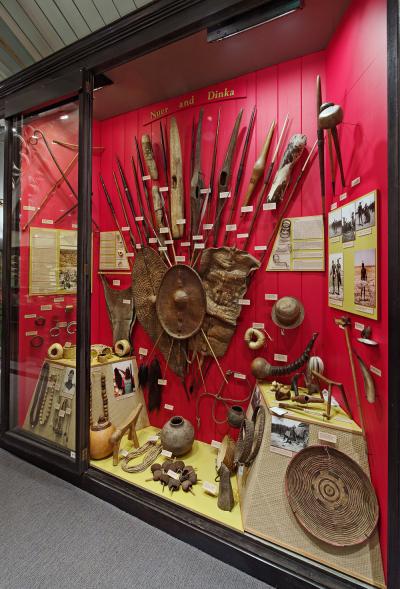Photography in the Museum Displays 1. Introduction
Photographs are given very different kinds of work to do in museum displays and are subject to what Corinne Kratz has described as ‘rhetorical repertoires’.[i] All of these repertoires are responses to the kind of work expected of photographs and have implications for how photographs from the colonial past might be deployed in museum narratives and therefore how photographs might contribute to an understanding of the colonial past. Indeed, given that, as Bal argues, showing is a form of framing, attention to the specifics of the work required of photographs can foster a more critical space into which these photographs might become more visible.
By considering the different forms of work that photographs are put to in museums, we might gain a better understanding of their specific role in exhibitions and museum practices. Rather than simply understanding their content as unmediated information on the one hand, and on the other as forms of representation, such an approach highlights the active agency of photographs. They are put to work in public narratives of history, and turn the archive into a dynamic and negotiable space.
It is now a commonplace that photographs have to be ‘understood in context’. Yet how does one address the intentionalism that context implies, without reducing the image to that one context? It is at this point that Mieke Bal’s use of the concept of ‘framing’ becomes important. Framing implies an active process through which photographs are made to have meanings, whereas ‘context’, which carries the weight of positivism, is static and contains meaning rather than opening up.
The anxiety about the photographic visibility of the colonial past has forced a tendency of ‘context’ which closes down and anchors meanings, rather than opening up a space for debate. Many institutions in which we worked and undertook interviews, which could or perhaps should have addressed the colonial past in the contexts of broader histories, did not. The colonial past thus is not approached as an integral part of the public narrative. Indeed in some instances rather actively erased from the museum’s narratives and the ways in which collections and their histories were understood. More than in any other kind of institution, photographs of the colonial past are most visible in contexts of anthropology museums. Indeed in museum thinking anthropology tends to work as a default category for ‘the colonial’. A significant number of curators when asked about the contexts in which they might address the colonial past and its photographic legacy responded “we don’t have an anthropology collection here”. They overlooked the fact that colonial networks were integral to the social and economic development of European nations through the nineteenth and much of twentieth centuries. For instance the new Museum of Bristol whilst powerfully addressing the city’s historical involvement with the trans-Atlantic slave trade. But it makes no mention of the dependence of subsequent economic develop of the soap, tobacco and chocolate industries being fundamentally related to colonial networks, a relationship which could well have been demonstrated photographically.
[i] Corinne Kratz, ‘The Rhetorics of Value, Visual Anthropology Review Spring 2011, 27(1): 29.
